TechRadar Verdict
Both the Intel Core i9-12900K and Core i5-12600K are among the best processors Intel has released in years, with incredible performance. Intel really has regained its crown, and even though you'll have to invest in new hardware to even install one of these chips, it's worth it for all the technology this new platform supports.
Pros
- +
Incredible performance
- +
Power efficient
- +
Supports all the latest tech
- +
Great for gaming
Cons
- -
Will have to buy all new hardware
Why you can trust TechRadar
Intel has been fighting an uphill battle for the last few years, ever since AMD first revealed its Zen architecture with its Ryzen processors. Ever since then, it seems like Intel has been playing catch-up, both in general performance and in terms of its technology. However, with the Intel Core i9-12900K and the Core i5-12600K, Intel really has pulled ahead, and it looks like Team Blue is back on top – at least for now.
These Alder Lake-S processors mark such a significant improvement over its 11th-generation Rocket Lake predecessors, and Intel can once again claim its “best gaming processor” claim without massaging the numbers too much.
However, these new processors come with a new socket, which means everyone will have to upgrade at least their motherboard – if not their memory and CPU cooler as well. Luckily, there are Z690 motherboards out there that support DDR4 memory which should lower the price of entry for some folks. But for those that want to really embrace all the best technology in PCs today, you’ll be happy to know that DDR5 is here, bringing much higher speeds and lower latency.
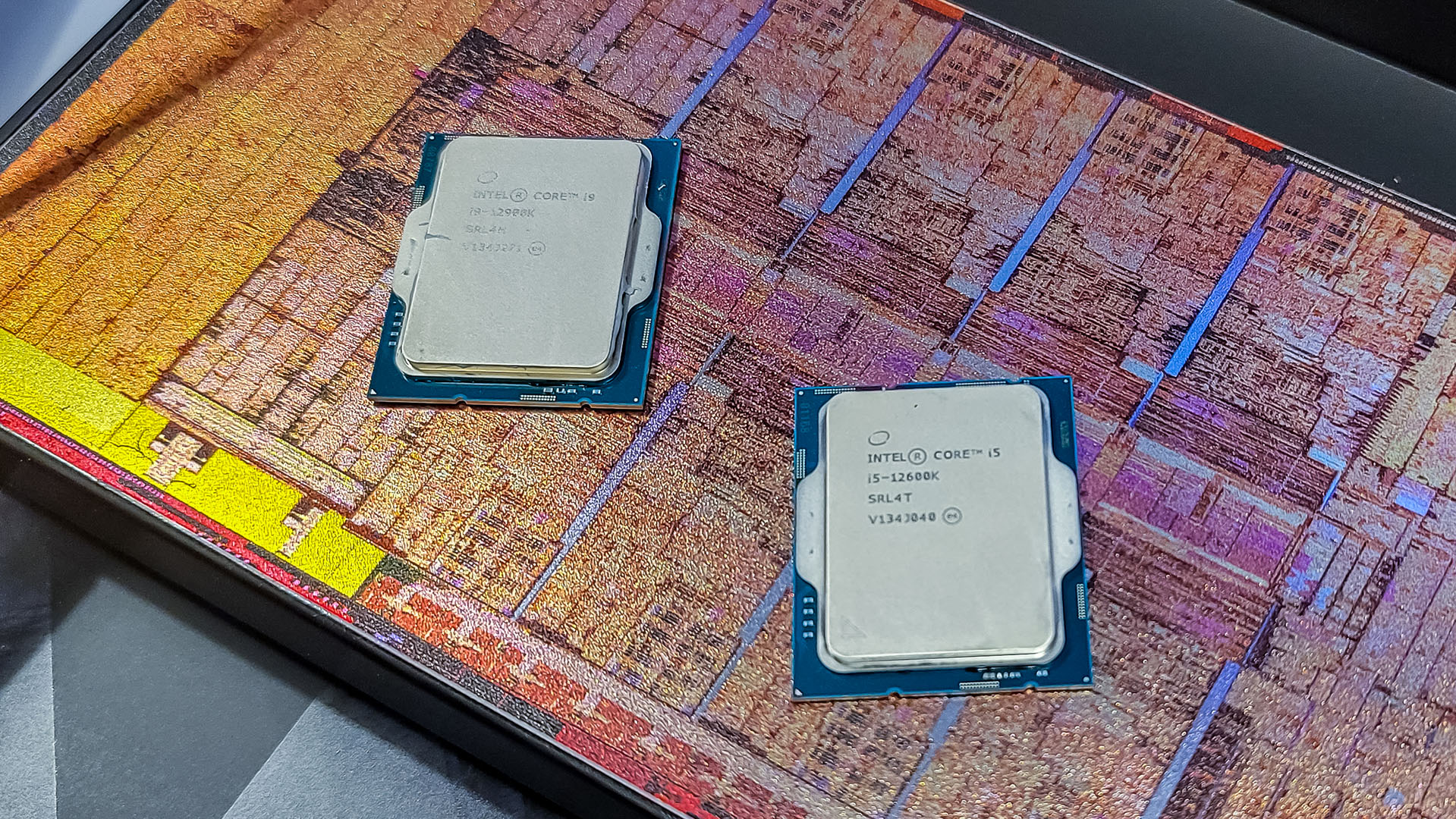
Price and availability
The Intel Core i9-12900K and Intel Core i5-12600K are available now, and have been since November 2021. If you’re looking to get your hands on these processors, the 12900K will be available starting around $589, though this is just a suggested price. At the time of writing, retailers are selling this high-end processor for around $616 / £569 / AU$949.
If you want the more mid-range Intel Core i5-12600K, that is available at the suggested price of $289. However, this processor is going for around $299 / £279 / AU$499. This makes it much closer to Intel’s suggested pricing than the higher-end processor, which makes sense given the wildly different audiences for these two chips.
If this seems weird to you, you’re not the only one. Rather than set a solid price for its processors, Intel simply releases a suggested price range and lets retailers sell the product for however much they want. That means that while Intel might initially advertise a very attractive price for its processors, the price might vary drastically depending on the time of year.
But either way, these processors really do fall in line with what the competition offers. For instance, the AMD Ryzen 9 5900X is going for around $559 / £514 / AU$809 – and that chip came out all the way back in October 2020. And, as we’ll see a bit later, Intel has quite a leadership position that may make the extra price worth it, especially if you’re doing heavy creative work.
Sign up for breaking news, reviews, opinion, top tech deals, and more.
As for the Intel Core i5’s competition, the Ryzen 5 5600X is going for $324 / £286 / AU$399. In the US and UK, then, Intel has a price advantage with a huge performance advantage pretty much across the board. Gone are the days that Intel lagged behind AMD in both performance and pricing, and Team Blue really has delivered a hard-hitting product at a great price.

Chipset and features
Both the Intel Core i9-12900K and Core i5-12600K are based off of Intel’s new 12th-generation Alder Lake-S architecture. This is built using the company’s new Intel 7 manufacturing process.
That may seem like we’re saying Intel 7nm process, but it’s a little more complicated than that. Intel 7 is just the name the company is giving to this generation of its 10nm process and marks a significant jump in performance – 10-15% performance per watt, according to a Medium post by Intel Vice President and Director Chris Auth. That’s technically the same size of node, but Intel has made many improvements to the individual transistors that make up the processor that keeps it competitive with AMD’s processors that are built on a technically smaller manufacturing process.
If you want to know all the nitty-gritty details, you really should check out that Medium post, but be aware – it’s not for the faint of heart.
But while it’s easy to get caught up in nanometers, that’s actually not what’s important here. What marks the monumental shift that sees the Core i9-12900K easily claim its leadership position is the way Intel designed the processors of this generation. With Alder Lake, Intel brings the hybrid core design philosophy that’s behind the SOC in your smartphone, and scales it up to a full-fat desktop processor.
Basically, you get two sets of CPU cores. In the Intel Core i9-12900K, there are 16 cores, but not all of those are the big CPU cores you’re used to. Instead, they’re split right down the middle, with 8 Performance Cores and 8 Efficiency Cores.
The Performance Cores are more traditional CPU cores, and through a technology called Intel Thread Director, the CPU – without the need of any training – will automatically place heavily threaded workloads on these stronger cores. Things like PC games, Blender, Adobe Premiere video editing, and other heavy workloads will all go on these stronger dual-threaded cores to muscle through and get things done quick.
And while that heavy lifting is being done on the Performance Cores (we’ll call them P-Cores from here out), Intel Thread Director will direct all background tasks to the Efficiency Cores (or, E-Cores). That way, things like your browser running in the background, or listening to Spotify while grinding in Destiny 2 won’t slow down what you really need the performance for.
We were initially worried that this new, more complicated CPU core layout would introduce bugs, especially as it arrived at around the same time as Windows 11 – and we all know how buggy a new OS release can be. But, much to our surprise, things have been extremely smooth. And even the issues around game compatibility at Alder Lake’s launch have been fixed, which means there is nothing holding you back from enjoying everything you want to do on your PC with these processors.
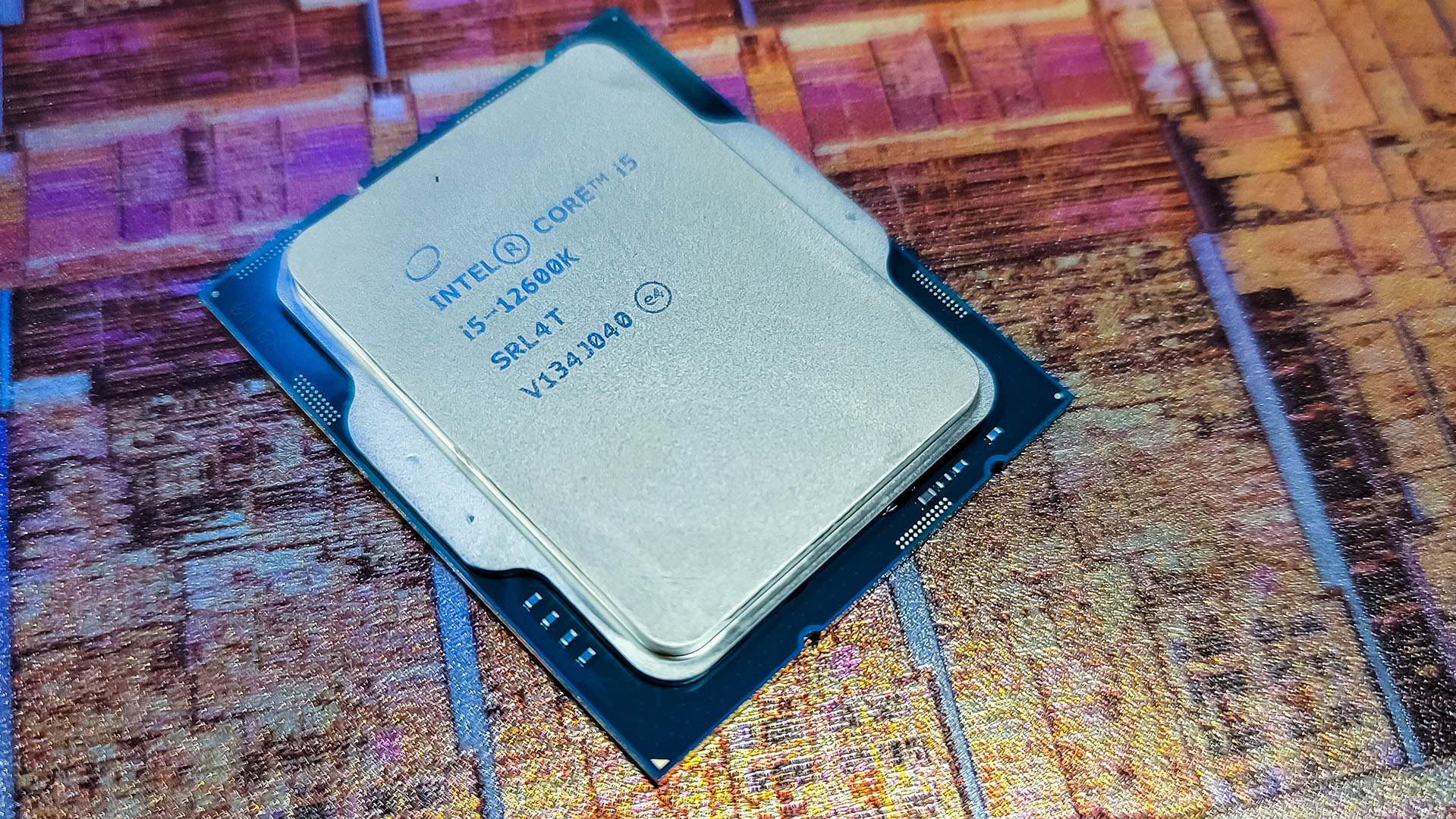
With this new design, Intel was able to pack 16 cores onto the 12900K and keep boost clocks high, reaching a Max Turbo of 5.2GHz out of the box. And, because it’s a K-series chip, you can push it even further if your heart so desires. Even the Intel Core i5-12600K has a high boost speed, topping out at 4.9GHz, even though the mid-range chip has 10 cores – 6 P-cores and 4 E-Cores.
But before you rush out and buy one of these processors and start playing with overclocking, you should be aware that they can get a little hot. Even with the 360mm AIO liquid cooler we use for testing, the Intel Core i9-12900K reaches up to 86°C. The Core i5-12600K fares a little better, only reaching 65°C with the same cooler.
If you’re looking to pick up the flagship Core i9 this time around, you really shouldn’t even bother unless you’re also willing to invest in a pretty serious CPU cooler. Even a 120mm liquid cooler simply won’t cut it – just look at our review of the Alienware Aurora R13 if you want to see what happens there.
But even with the higher temperatures, Intel was able to drastically improve performance over the Core i9-11900K while keeping power consumption around the same level. Throughout our testing, the Core i9-12900K peaked at 252W of power to the 11900K’s 266W. And that’s with 70% higher performance in Blender. Not bad for a gen-on-gen improvement.
But it’s important to note that because there’s a new socket, you may need to buy a new CPU cooler, or at least reach out to your CPU cooler manufacturer to get a new mounting bracket. For our CPU cooler, all we needed was some different screws, to make up for the slightly thinner chip. But because the processor itself is longer, there is a chance that your CPU cooler may just not be compatible. So, make extra sure your cooler is compatible before you seal up your rig.
The shift to this new chip layout would have been enough to make us impressed, but Intel went ahead and included a wealth of new technology on its 12th-generation platform. Chief among these is DDR5 memory.
It was only a matter of time before we got DDR5 memory on a mainstream computing platform, Intel was just first to the punch. Right now, it’s not necessarily crucial to upgrade your memory, but you should keep in mind that Z690 motherboards are going to support either DDR5 or DDR4 memory, and won’t support both. DDR5 will probably be much more expensive for a while, but it will be more future-proof, and will likely last you through plenty of PC upgrades in the future.
Alder Lake also brings support for PCIe 5.0. That’s pretty exciting, though it feels pointless right now. PCIe 4.0 devices are only now really taking off and it’ll probably be a while before we start seeing SSDs and graphics cards really taking advantage of the technology. But, again, it’s something that will make your system future-proof – to the extent that future-proofing even exists.


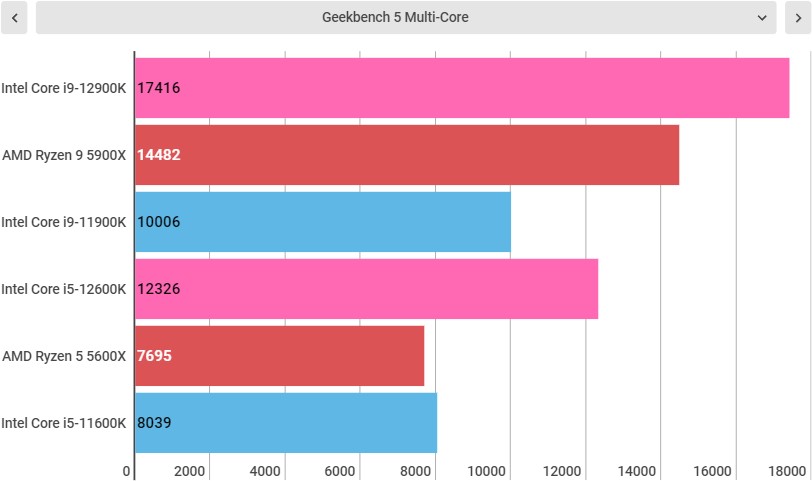
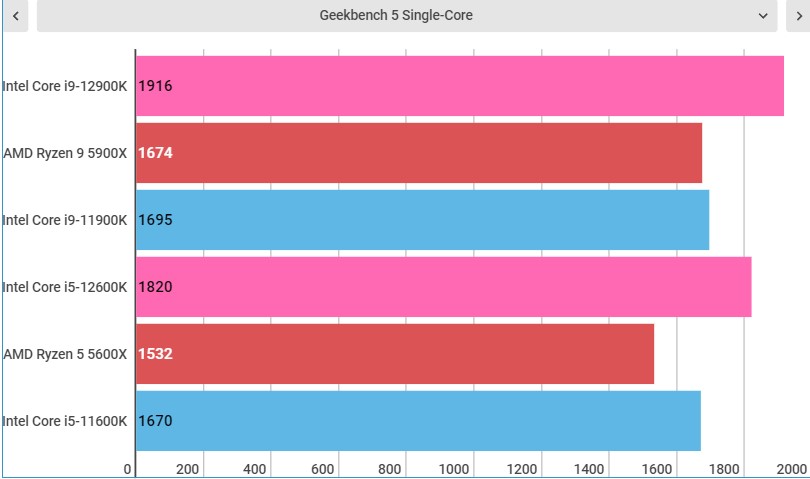


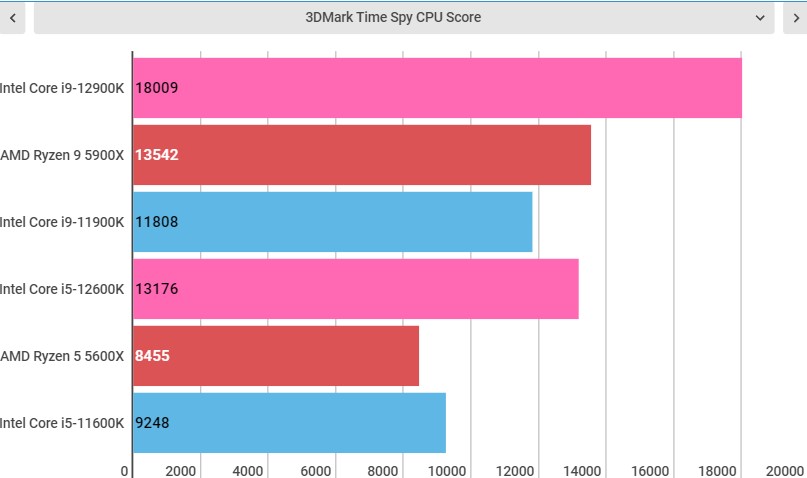
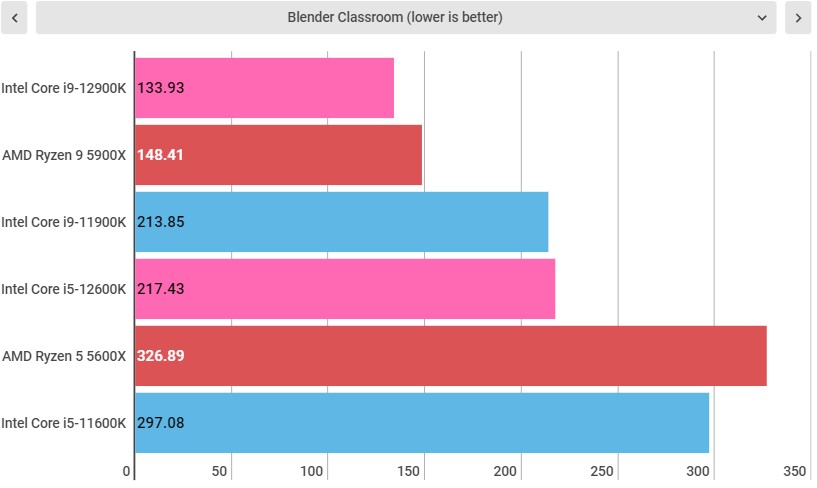
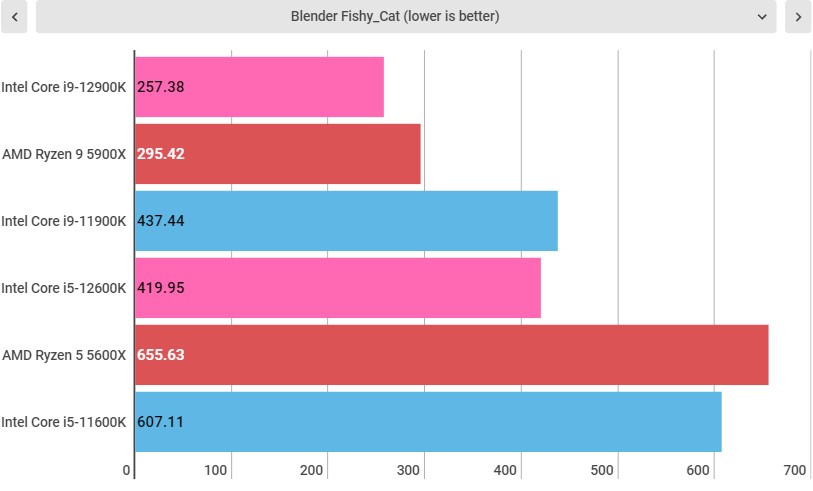
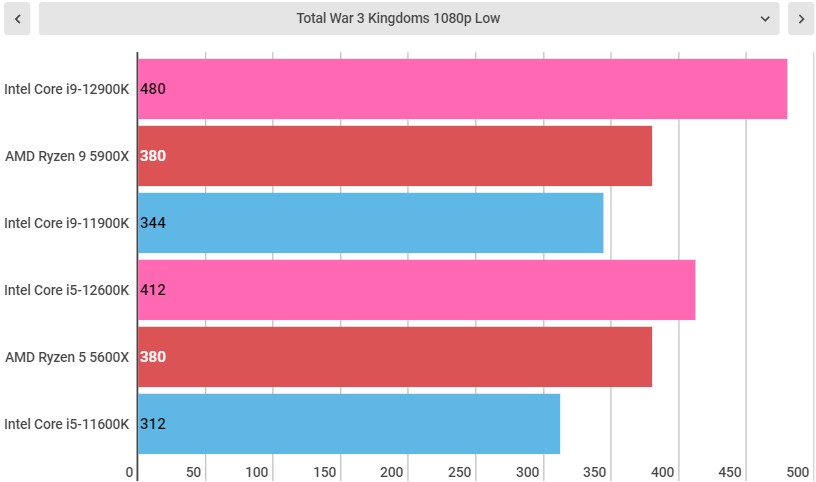
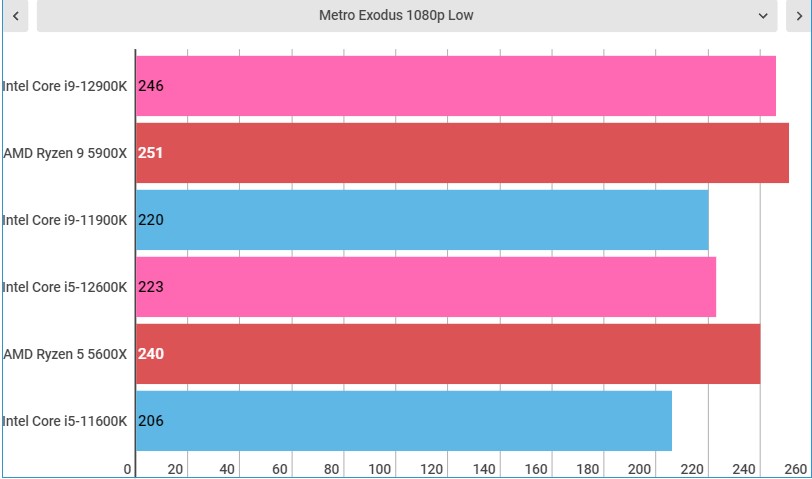

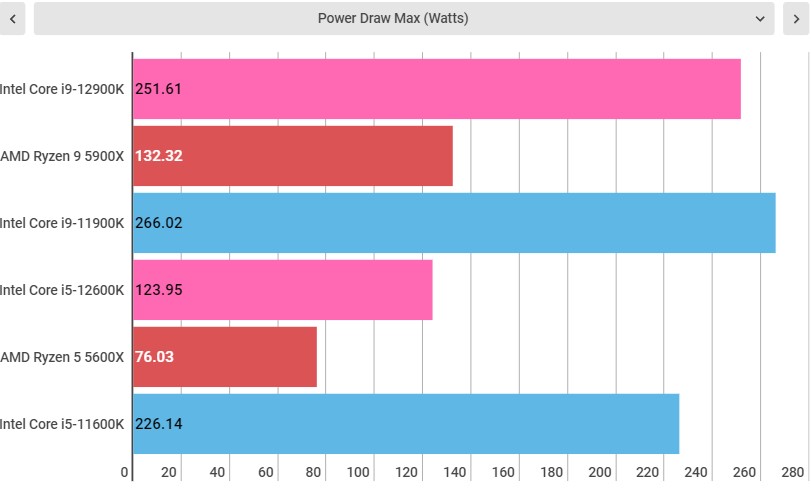
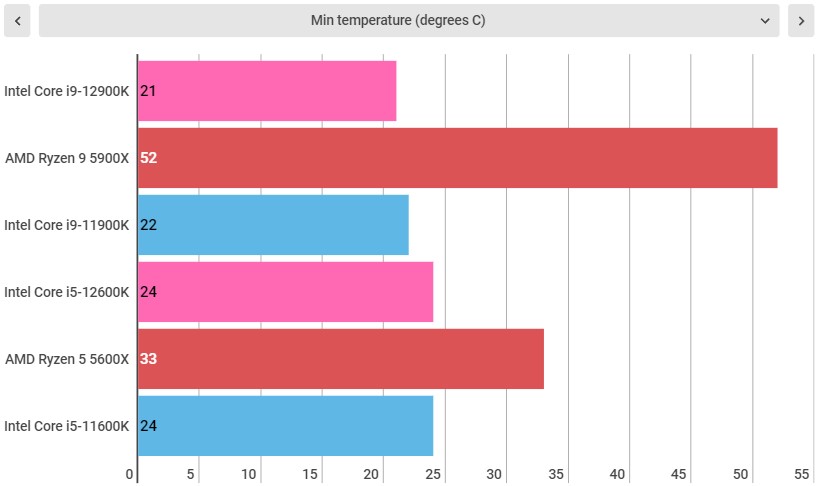
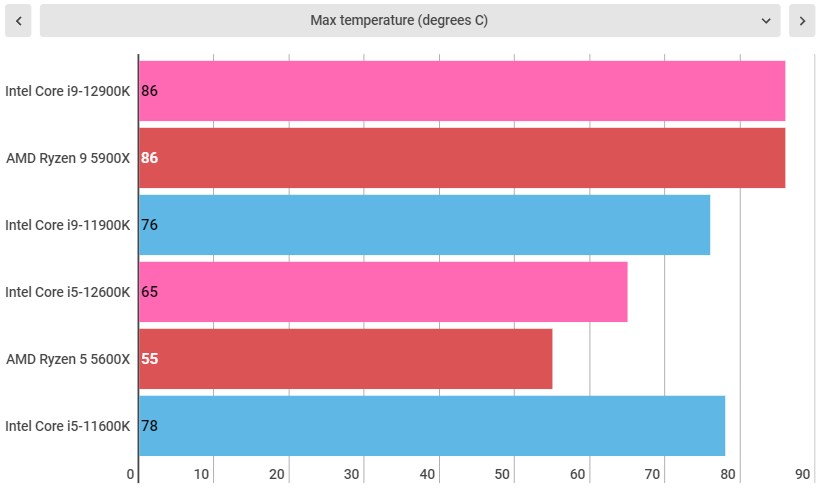
Performance
While Intel has constantly claimed it was making the best processor for gaming with every single generation, the Intel Core i9-12900K is, without a doubt, the best processor for gaming right now. And it’s not really even close.
Looking at pure gaming performance, the Intel Core i9-12900K is about 2% slower than the Ryzen 9 5900X in Metro Exodus, but it’s a whopping 26% faster in Total War: Three Kingdoms. Even in the 3DMark Time Spy CPU test, which really puts chips to the limit, the Core i9-12900K is 33% faster than the 5900X.
This continues in more creative workloads as well. In Blender, the 12900K is 15% faster than the 5900X, and is 23% faster in Cinebench R23. The numbers for Adobe Premiere and Photoshop look very similar too. With this new flagship, Intel was easily able to take a leadership position throughout our entire test suite – with the exception of Metro Exodus.
What’s perhaps more impressive, though, is how the Intel Core i5-12600K compares to the Ryzen 5 5600X. In gaming, the Core i5-12600K is around 2-8% faster in Total War and Metro, but that number jumps up to a whopping 55% in the Time Spy gaming test. That might not seem like much, but it suggests that Intel has a lot of room to grow, and that this processor will continue to offer improved performance as games are better programmed to take advantage of the new chip layout.
And while a Core i5 processor isn’t really meant to be a creative heavyweight, it’s no slouch. It’s 55% faster than the Ryzen 5 5600X in Blender, and it even looks pretty decent against the much more expensive Ryzen 9 5900X – just 42% slower.
If you’re going to be buying a new processor or just a new computer in general, there’s no reason not to go Intel right now. The performance is just too good to ignore. No matter what you’re going to be using your PC for, you’re going to get some incredible performance from these new processors.
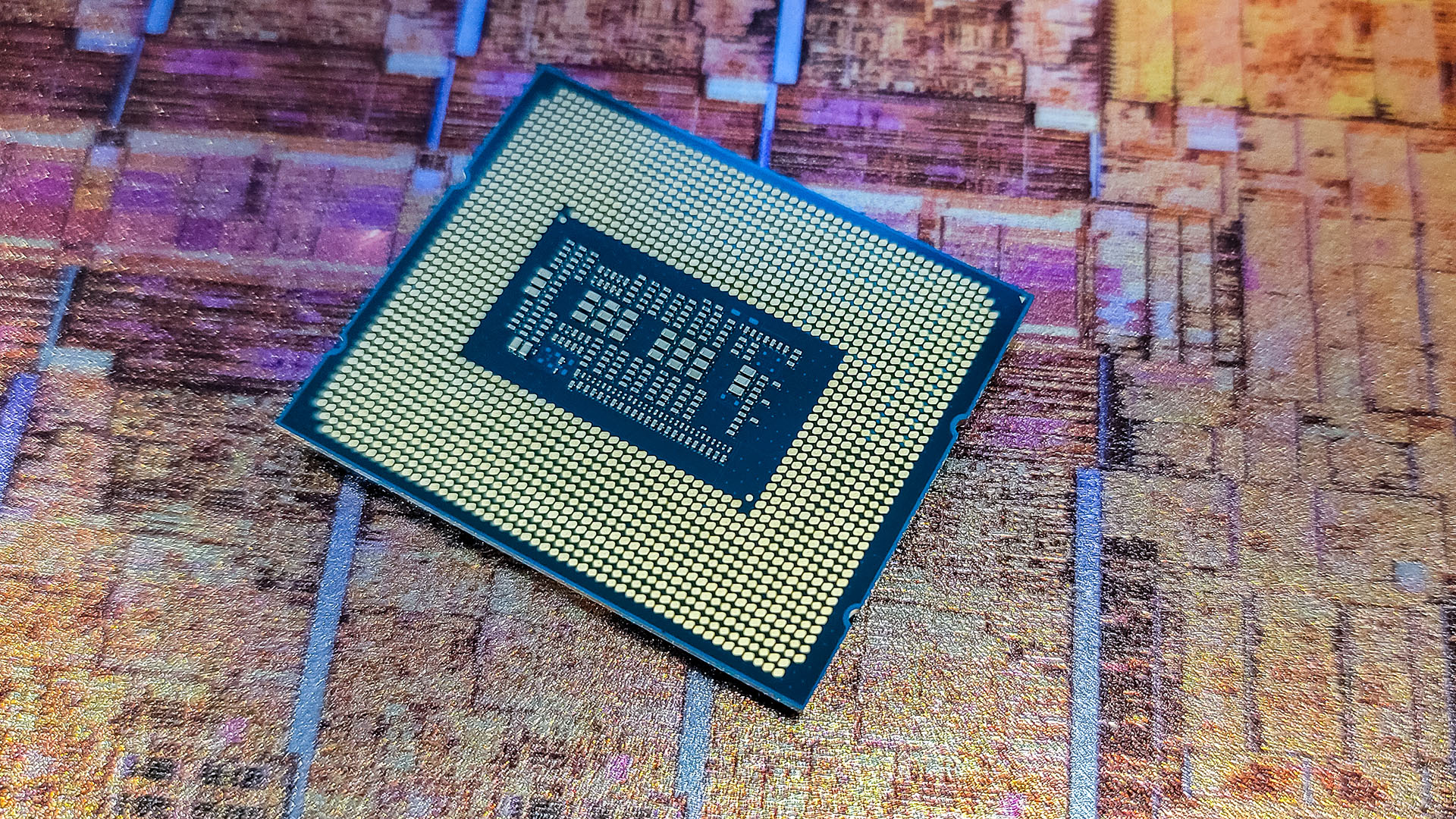
Buy it if…
You want strong gaming performance
Without a doubt, the Intel Core i9-12900K is the strongest gaming processor on the market right now. And, the Core i5-12600K is no slouch, either.
You want a future-proof platform
While the concept of “future-proof” is flawed, Intel Alder Lake processors like the Core i9-12900K support all the latest and cutting edge PC technologies. You will not need to upgrade for a long time.
You want an efficient PC for multi-tasking
With the new chip layout giving you dedicated cores for high-performance computing and efficiency cores to power background tasks, you won’t have to worry about a random program slowing you down again.
Don’t buy it if…
You don’t want to upgrade a ton of components
Because these new processors use a new CPU socket, it’s likely that you’ll have to upgrade both your motherboard and CPU cooler to use the Core i9-12900K or Core i5-12600K. And, it’s possible you’ll have to buy all-new memory, too, if you get a board that supports DDR5 RAM.
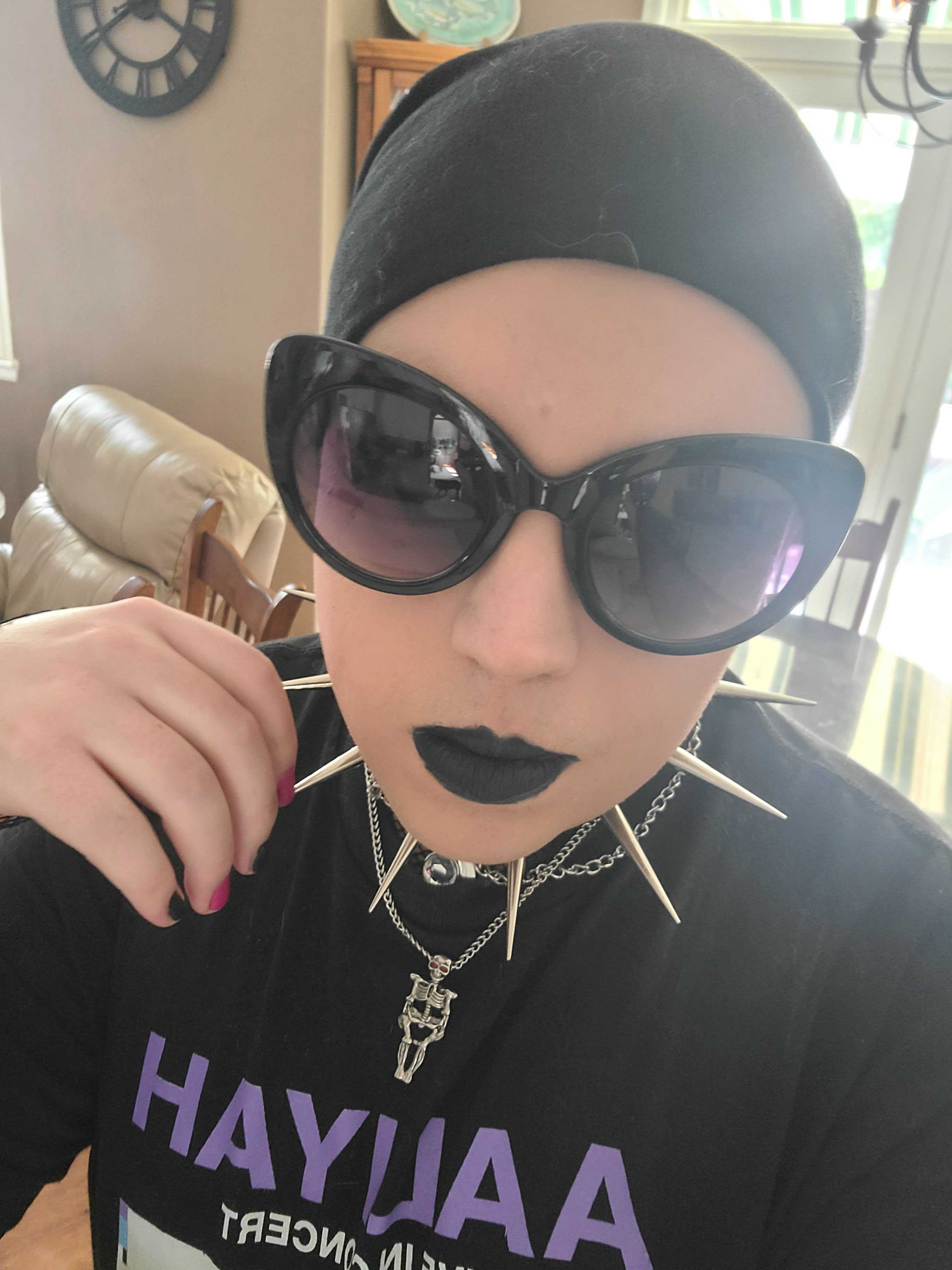
Jackie Thomas is the Hardware and Buying Guides Editor at IGN. Previously, she was TechRadar's US computing editor. She is fat, queer and extremely online. Computers are the devil, but she just happens to be a satanist. If you need to know anything about computing components, PC gaming or the best laptop on the market, don't be afraid to drop her a line on Twitter or through email.
